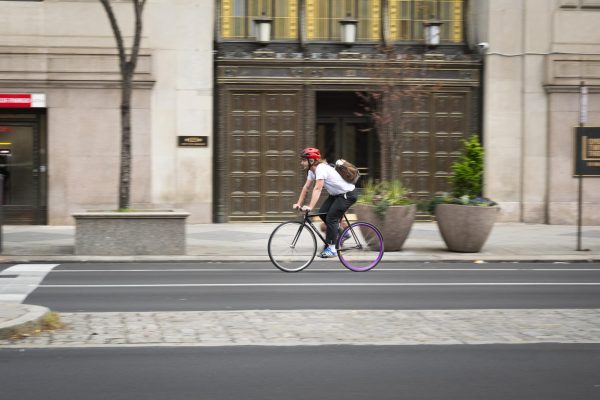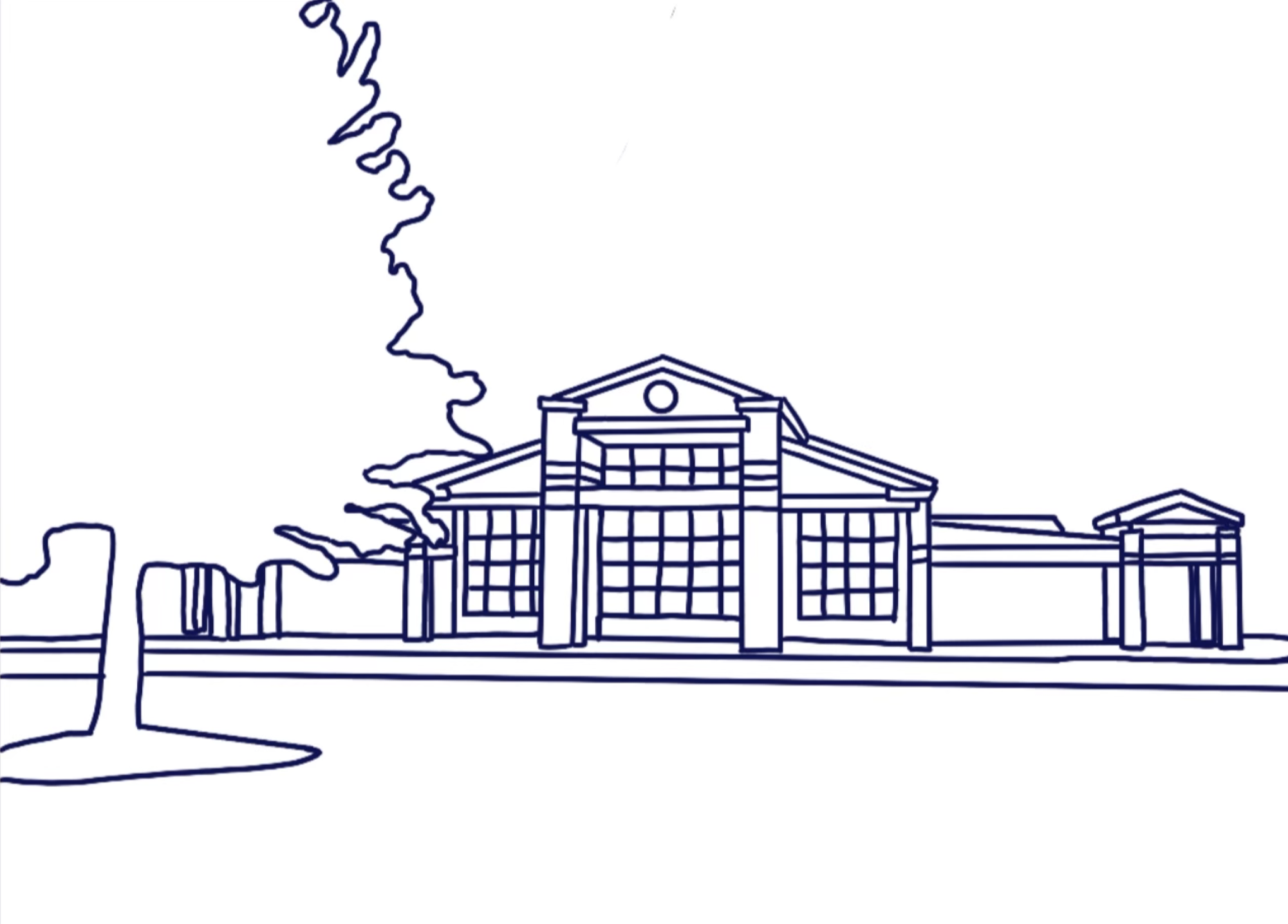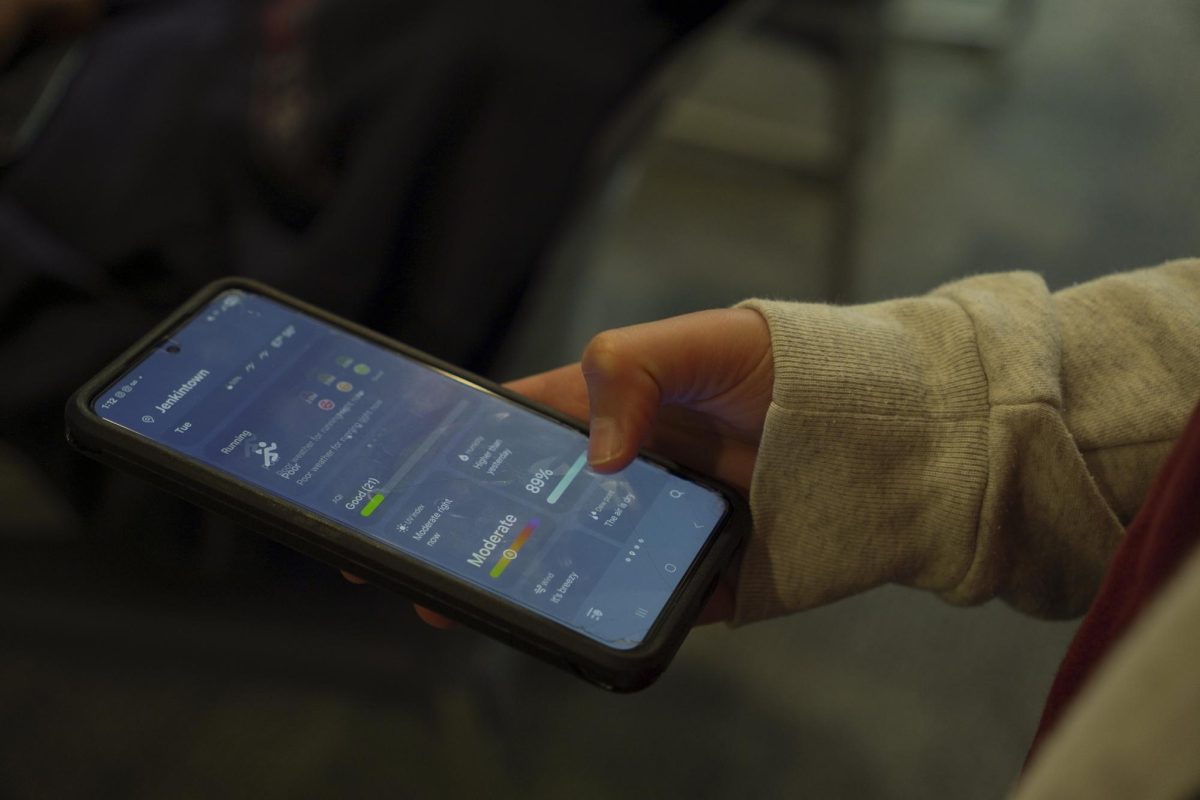Have you ever wanted to leave your house and then realized someone else in your family had taken the car? Bummer! You can’t see your friends, get groceries, go to a park, or even eat at a restaurant now. The situation above might seem extreme, but it is unfortunately the truth in an overwhelming majority of places in the US.
Unless you live downtown in a major city like New York, chances are that your family has a car or even multiple. American cities have been designed around cars. The roads are extremely wide and not pedestrian-friendly, and there is no transition between downtown and suburbs.
This was especially apparent during my visit to Houston for the 2023 FIRST Championship, where we went from the bustling city to grid-like suburbs in about a block. In the US, there is no transition between urban areas and suburban areas.
To make matters worse, most US cities do not have mixed-use zoning like most European cities. In other words, all residential spaces are in one place, and all stores are in another place. However, when I lived in the suburbs of Brussels and Paris, there was a swimming pool, a Carrefour, a small park, and a subway station within 3 minutes of walking. This is also true for many parts of Europe.
The effect of this is that you need to travel a very long distance to get groceries, eat something, or go to the gym. A car is the only option in most cases to get there.
Another stark feature of US cities is the width of roads. In the US, lanes are about 40% wider than European roads. This gives the impression that cars are prioritized over all other modes of transportation.

You may ask, why is car dependency bad? A negative effect of car dependency is the reduced opportunity to meet new people. When more people walk or take public transportation, you get more opportunities to meet more people because people are not isolated in metal boxes. This is especially important after the pandemic where people are even more separated. Needing a car to go everywhere gives children under 16 less independence than children in other countries.
Another drawback of car dependency is the increased traffic. It is way more efficient and less traffic-inducing for a subway to move 200 people than two hundred people in 100 cars. No matter how many lanes we add, they will never solve the root of the issue: the lack of alternative ways to get to your destination efficiently. The more lanes you add, the more cars will come and fill those lanes up.
No matter what new technology is invented, the problem cannot be solved unless we drastically change how we design our cities. We need to get more stores and gathering spaces integrated into the community and also change the culture around cars. When cars are not the only reliable method of transportation, the country will be a safer and more efficient place for everyone.

























Student • May 27, 2025 at 8:37 pm
I agree that our cities are poorly designed when pedestrians are in mind, and that our country is much more reliant on cars than the ones in Europe. I would certainly prefer to have zoning more like the ones mentioned, such as Paris. It would be better in my opinion to have more things closer together, as I enjoy walking around, especially in a newer place and as someone who cannot yet drive by myself, the ability to walk to places by myself is a great thing, and it can also be very healthy the more you do it. Unfortunately for that mindset, everyone’s first instinct is to pile into a car and drive to the destination. I also feel that another unmentioned difference between the US and Europe is the sheer size difference between the two. Most countries in Europe are at most a bit larger than some states, and in some cases are swallowed whole by a state like texas. Given this, cars and other vehicles make it much easier to traverse the massive land mass our country is placed on.
Malea • May 19, 2025 at 12:51 pm
The reason why the US is so car dependent is because we live in a capitalist society. The US benefits most on making money on other people especially the rich. The more people that buy fancy cars and so many of them, the more the country is able to survive the way it does. Unlike most, the main city of Philadelphia took components of Paris to build the city. The Ben-Franklin Pkwy is similar to the Champs Élysées and the art museum replicates Parisian structures. Philadelphia is a walkable city (In my opinion) but many other cities fail to relate, and the reason why is for capital gain. Thinking about it in a more complex way, tourists that visit busy cities are highly unlikely to walk throughout it as it’s more time consuming, tiring, and unfamiliar than driving would be. Visiting that city (if the way they got their was flying), they would need to rent a car. But this also relates to not automobile transportation. If you wanted to bike throughout the city, you would also need to pay for it and half of the time setting it up takes too long. A lot of cities are tourists traps and they all work.
Natalie • May 18, 2025 at 9:06 pm
I entirely agree with this perspective. I myself have spent a large chunk of my life living in Europe, and it has never astonished me how much, not only more efficient, but also safer it is. When spending some time in Ukraine, walking ot the grocery store was such a common thing, but here in America, I have to get up and drive to be able to get anything. Living in Philadelphia, the train and subway are always there, but it’s just not safe for us to use them. In Europe, subways look as if they were museums, and there is never any fear of standing in line for your train to arrive. I think the ongoing joke of claiming a “Highway would look great here” in a beautiful natural area is no longer an exaggeration of the American building systems. I am tired of looking outside and seeing one tree every ten feet. It is definitely time for a change.
Adalyn • May 15, 2025 at 3:06 pm
I definitely agree that the US has a lot of dependency on cars. It’s crazy to me that when you go to most European countries there roads are definitely not as big as they are in the US. Even wilder is that the US continues to expand its roads even when we already have highways and roads with five lanes. I also find it unfair to the people who either don’t have a car or can’t get one because of the reason they have. And yes we do have public transportation but a lot of the time now it can be unreliable due to staff shortages and the risk of it being taken out all together. I just hope that we can adapt and have biking and walking and things like that are safe enough so we don’t have to rely on cars.
Neiko • May 14, 2025 at 10:39 am
I agree with this article. Another problem with the U.S. prioritizing cars is the lack of care that goes into public transportation. By that, I mean the cleanness, cost, and reliability. When I traveled to Japan, there were vast differences in how cities were instructed compared to the U.S. Even though people still drive cars, they’re not the main priority; it’s the people. When going to train stations, the amount of authority and routine the stations had could not even compare to the U.S; it was amazing! I believe if public transportation were more prioritized than having cars, the U.S would be much better. Not only would cities be built better, but there would be less pollution output, and I think that it would be cleaner because people would be relying on it more. The overuse of cars is one of the things I hate most about the U.S.
Derek • May 14, 2025 at 10:36 am
I agree on how poorly designed US roads and cities are. There is a road near my house where the sidewalk was removed just to give room to drivers. There is a restaurant near my house that I like, but in order to walk there, I have to cross a wide, busy road, then cross a boulevard just to walk there. Another thing about US roads is that they aren’t well-maintained either. The number of potholes some roads have is crazy. Family, I have to say European roads are nicer and safer. US roads are poorly designed for pedestrians and poorly maintained for drivers.